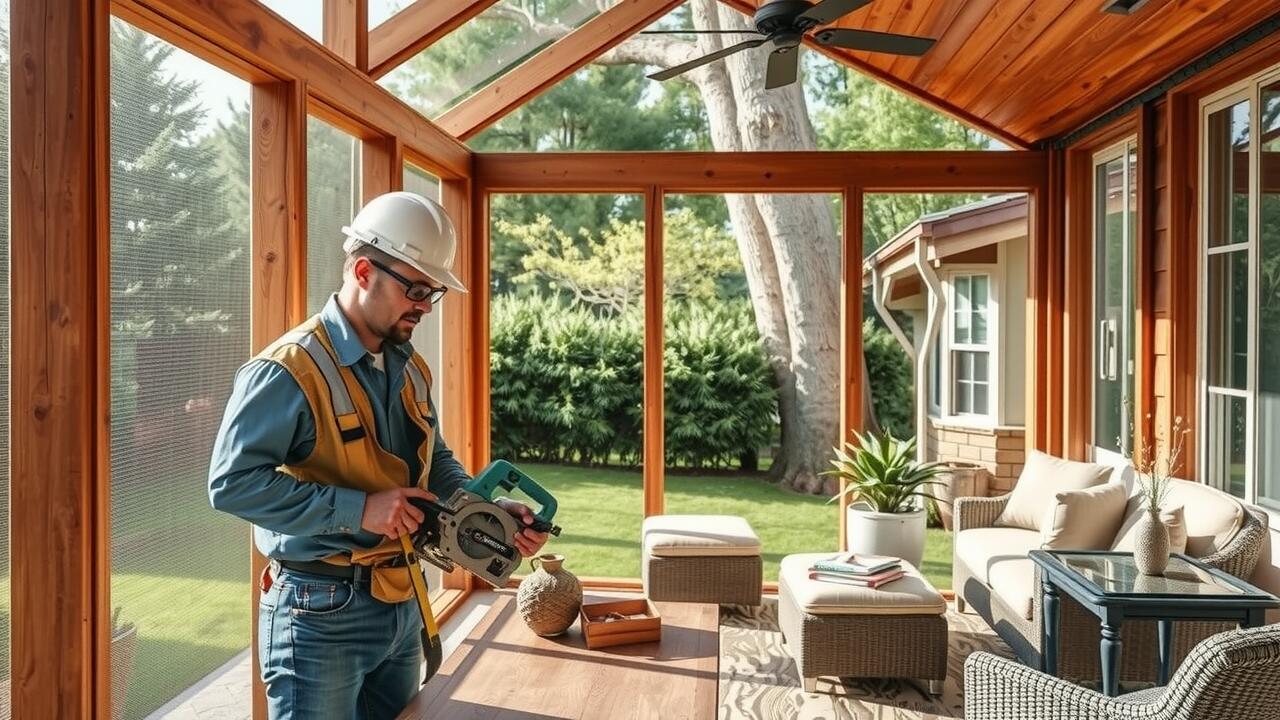
Permits and Regulations
Before initiating the construction of a 20×20 screened-in porch, it’s essential to understand the permits and regulations that may apply in your area. Many municipalities require a building permit for any structure that alters the exterior of your home. This helps ensure that your project adheres to safety standards and zoning laws. Check with your local building department to confirm specific requirements, as they can vary significantly between regions.
In addition to obtaining the necessary permits, be aware of any local building codes that govern screened-in porches. These codes often dictate the materials, structural design, and safety features such as electrical installations. Addressing these codes from the start can avoid potential delays and fines during your project. It’s advisable to consult with a contractor who has experience with screened-in porches to ensure compliance throughout the construction process.
Local Building Codes to Consider
When planning to construct a screened-in porch, it’s essential to familiarize yourself with local building codes. These regulations can dictate how the structure is designed, its height, and proximity to property lines. Some municipalities may have specific guidelines regarding the materials used, which can influence the overall cost of construction. Conducting thorough research on local ordinances can help ensure compliance and avoid potential fines or delays during the building process.
In addition to building codes, property zoning regulations may also impact your project. Zoning laws often determine what types of structures can be built in certain areas and may include restrictions on the size and footprint of a screened-in porch. Knowing these details ahead of time can aid in planning your build and prevent unexpected obstacles later in the project. Engaging with local authorities early in the design process can provide clarity and streamline your construction efforts.
Seasonal Considerations
When planning to build a screened-in porch, seasonal factors play a significant role in determining both timing and cost. Spring and early summer typically provide ideal weather conditions for construction. These seasons are characterized by mild temperatures and lower chances of rain, making it easier for contractors to work efficiently. Additionally, materials are less likely to be affected by moisture, reducing the risk of delays or damage.
On the other hand, winter months can present challenges such as snow, freezing temperatures, and ice. These conditions can lead to increased labor costs and extended timelines. If homeowners choose to build their screened-in porch during fall, they may encounter fluctuating temperatures and potential weather delays. Careful planning is essential in selecting the right season to ensure the project proceeds smoothly and within budget.
Best Time of Year for Construction
The best time of year to construct a screened-in porch often depends on the local climate and typical weather patterns. Many homeowners find that spring and fall provide ideal conditions for building. During these seasons, temperatures are moderate, allowing for a more comfortable working environment for contractors. Rainfall is generally more predictable, which minimizes delays due to adverse weather conditions.
Planning construction during these times can also take advantage of more favorable weather for drying materials, such as concrete and paint. Additionally, scheduling a screened-in porch build in the shoulder seasons can help avoid peak pricing and contractor backlogs commonly seen in summer. Homeowners may find more availability and potentially lower costs when choosing to build in the off-peak months.
Maintenance Costs
Maintenance costs are an important aspect to consider when planning for a screened-in porch. Regular upkeep will ensure that your investment remains functional and visually appealing over time. This includes routine cleaning of the screens, removal of debris, and inspection for any wear and tear. Metal and wood components may require occasional painting or sealing to protect against the elements.
Additionally, homeowners should factor in potential repairs. Damage from storms, pests, or general wear may necessitate replacement of screens or repairs to the framework. While these costs can vary based on the materials used and local climate conditions, budgeting for maintenance is essential to ensure a long-lasting and enjoyable screened-in porch.
Long-Term Upkeep of Screened Patios
Maintaining a screened-in porch involves regular inspections and minor repairs to ensure its longevity. Homeowners should check the screens for any tears or punctures, as even small damages can lead to bigger issues, such as pest invasions or water damage. Replacing damaged screens is usually straightforward and can be done with minimal tools. Additionally, keeping the frame and structure clean helps prevent rot or rust, especially if the patio is made of wood or metal.
Cleaning the floor and furniture in the screened-in porch is essential for a pleasant outdoor experience. Accumulation of dirt and leaves can encourage mold and mildew growth. Regular sweeping and using a mild cleaning solution for surfaces help maintain the aesthetic appeal. Consider applying sealant or paint periodically to protect wooden components from weather damage, ensuring the space remains both functional and inviting for years to come.
FAQS
What is the average cost to build a 20×20 screened-in patio?
The average cost to build a 20×20 screened-in patio typically ranges from $8,000 to $15,000, depending on materials, labor, and additional features.
Are there any permits required for building a screened-in patio?
Yes, many local governments require permits for building screened-in patios. It’s essential to check local building codes and regulations before starting your project.
What are the best materials to use for a screened-in patio?
Common materials for building a screened-in patio include wood, aluminum, and vinyl. The choice depends on your budget, climate, and desired aesthetics.
What is the best time of year to build a screened-in patio?
The best time for construction is typically in the spring or early fall when weather conditions are mild, reducing potential delays due to extreme temperatures.
How often should I perform maintenance on my screened-in patio?
Maintenance should generally be performed annually, including cleaning the screens, checking for wear and tear, and ensuring that the structure is secure and intact.
